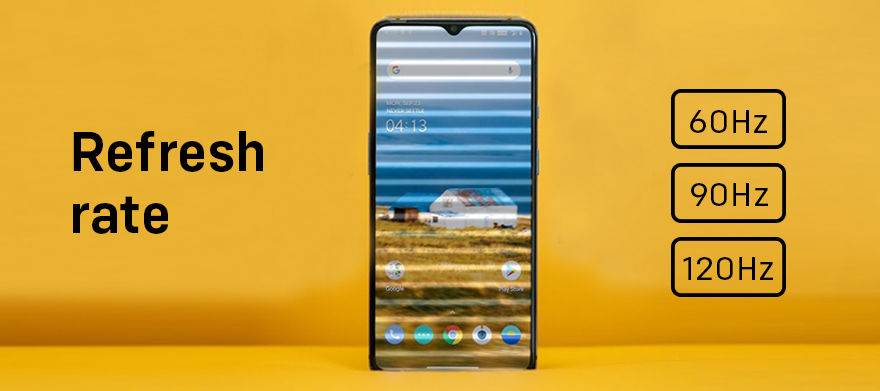Mobile Phone Refresh Rate
What you need to know:
If you’ve had your trusty phone for a year or more, you’d be forgiven for thinking little has changed in the smartphone world. However, you couldn’t be more wrong! While it can be said that smartphones are doubling down on tried and tested design, they’re also doubling up on something else at the same time: screen refresh rate. But what does this mean?
Imagine a pitch-dark room with strobe lighting – every time the light flickers (or ‘refreshes’), you see a ‘frame’. The faster the light flashes, the smoother motion appears to the eye. Phone screens work in a similar way.
Every display must refresh a certain number of times to make it look like what you’re seeing is moving. Refresh rate means how quickly the content on your screen can update, or refresh, moving onto the next frame.
Where most phones predating mid 2020 had a refresh rate of 60 Hz (or 60 refreshes per second), the best handsets of 2021 can go all the way to a silky smooth 120 Hz and beyond. So, how does it improve your phone experience?
Take gaming to the next level:
Love gaming on the go? Refresh rate is your best friend. While phone screen tech has moved on leaps and bounds, mobile game developers have been pushing boundaries on game graphics. There are a good few games out that have been designed to take full advantage of that smooth display.
For competitive online multiplayer games, the difference refresh rate makes is stark. Not only does motion feel twice as realistic, but the ability to show extra frames every second means that it’s a sharpshooter’s dream. Super-precise, easy on the eyes, and likely to give you the crucial upper hand against your opponent – everything you need to grab the win.
Watch content in style:
Let’s be clear, most movies and TV shows are not recorded at 120 frames per second (yet). 24 fps is the minimum number required for the human eye to perceive lifelike motion, and most movies range between 30 and 60 fps. But we’re not far away from 120 fps, and the screens that already support it will be the first to showcase it.
While at this moment in time, the majority of content you watch will be from 30-60 fps, phone displays that refresh faster can handle 60 fps without breaking a sweat. That means you can get stuck into that bingeable drama the way it was meant to be viewed, without any juddering motion at all.
Effortless scrolling
Ever scroll through your contacts to make a call, or your music library to play a tune and find your vision blurring as you try to read the text? We all have! That’s because when you scroll quickly on a phone with a 60hz refresh rate, the moving page is too fast for the refresh rate to keep up, so the text morphs into an imperceptible blur.
With higher refresh rate phones, that doesn’t happen. For every frame you see on your current phone as you scroll, a 120 Hz phone will show you an extra frame. That’s what keeps your scrolling smooth, and the text looking like…well, words.
Which phones have a high refresh rate?
Plenty of the best phones out there pair an OLED screen (the gold standard of displays) with a high refresh rate for good measure. Of course, those premium display benchmarks can make a bit of a dent in the phones battery life, if it weren’t for a neat solution.
Samsung’s full Galaxy S21 range and the S20 FE can go all the way to 120 Hz, but they have a clever trick to manage the battery life impact. It’s called Adaptive Refresh Rate, and it works out what you’re doing on your phone to decide if you need the refresh rate maxed out. If you don’t need it cranked up, it’ll drop the refresh rate to save battery. Whenever you touch the screen to navigate, it’ll go up to 120 Hz – if you leave it for a few seconds, it’ll drop down to 60 Hz. Smart.
The OPPO Find X3 Pro has a similar feature called Dynamic Refresh Rate. It can actually drop the refresh rate to 5 Hz, drawing out battery life to keep you powered up throughout the day. Or, if you’re after a 120 Hz refresh rate that never drops, the Sony Xperia 5 ii takes Sony’s cinematic style display and combines it with a little OLED magic and super-smooth motion. You won’t believe your eyes.
That’s all you need to know about smartphone refresh rates for now! While we’re seeing 120 Hz screens on more premium phones, we think it’s only a matter of time before we see mid-rangers adopt this tech as the new standard. Watch this space!
What’s the latest smartphone development that’s left you with ‘the wow factor’? Let us know below.



